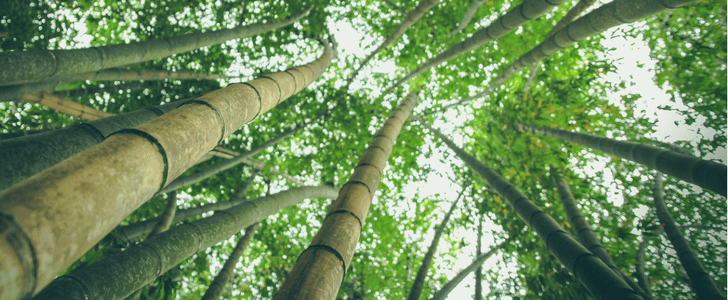Good Info For Selecting Merino Wool Base Layers
Wiki Article
Why Are Baselayers Of Merino And Yak Wool Beneficial In Winter Sports Clothes Due To Their Natural Fiber Benefits And Environmental Sustainability?
Yak merino Wool base layers are highly effective for winter sport clothing not only due to their performance benefits but also due to the benefits of natural fibers and sustainability for the environment. Renewable and Biodegradable-
Both merino and yak are natural fibers made from animals. These are renewable resources which can be harvested sustainably, without harming animals. They are biodegradable, without harming the environment.
Low Environmental Impact
Natural fibers typically have less environmental impact than synthetics. The harvesting and cultivation of wool involves fewer chemicals and less non-renewable materials as compared to synthetic fibers.
Energy Efficiency
Wool fibers are processed using less energy than synthetic fibers. Natural wool manufacturing is energy efficient and results in less carbon emissions.
Reduced Microplastic Pollution
Contrary to synthetic fibers that shed microplastics during washing natural wool fibers aren't able to cause microplastic pollution in water bodies.
Durability and Recycling
Yak Merino Wool clothing tends to be durable and long lasting, which can extend their life expectancy. Wool fibers are also recyclable or reused to decrease consumption and harm to the environmental impact.
Sustainability Practices
Wool producers and manufacturers follow sustainable, ethical practices. They adhere to the welfare of animals, land management responsible and fair treatment for the workers involved in the chain of production.
Environmental Certification-
The Responsible Wool Standard or the Global Organic Textile Standard, (GOTS), are both standards that demonstrate ethical and environmentally mindful practices for wool production. These standards give consumers a level of assurance on sustainable practices.
In general, the base layers made from yak wool Merino have minimal impact on the environment. They're manufactured using renewable resources and adhere to the highest standards of sustainability and ethical conduct throughout their supply chain. By choosing natural fibers like yak merino winter sports apparel, you are supporting environmentally responsible and sustainable practices for consumption. Follow the top rated look what I found on merino wool base layers for site recommendations including best base layer for skiing women's, icebreaker merino wool base layer, merino wool long underwear women's, smartwool long underwear, paradox merino blend, wool long johns women's, best ski underlayers, merino wool base layer hunting, merino wool layers, baselayer bottom and more.

What Are The Advantages Of Wearing Bamboo Clothing As Outdoor Clothing For Warmth, Comfort And Sustainability?
Durability, comfort, and protection are all benefits of bamboo clothing. Bamboo is a great choice for winter outdoor wear.
Bamboo fabric is soft and smooth, which makes it gentle to the skin. Bamboo fabric is frequently compared in terms of luxury to silk and cashmere.
Bamboo fibers are wicking properties, which draw moisture away from the skin to keep you comfortable and dry when you exercise.
Thermal Regulation- Bamboo clothing has natural temperature-regulating properties, providing warmth in winter while remaining breathable to prevent overheating.
Sustainability-
Bamboo is a resource that can be utilized to expand rapidly and with minimal pesticides. Bamboo is a natural material that regenerates quickly, making it a sustainable choice.
Low Environmental Impact- Bamboo cultivation generally requires less water than conventional cotton farming and doesn't reduce soil nutrients. Bamboo produces more oxygen and absorbs CO2 in comparison to other plants.
Protection for Outdoor Wear-
UV Protection- Bamboo fabric provides natural protection from harmful UV radiations.
Bamboo is antibacterial and has antimicrobial characteristics. Bamboo contains "bamboo Kun," a natural agent that blocks the growth of bacteria responsible for smells. This keeps clothing fresher longer, especially when used outdoors.
Additional Benefits
Durability - Bamboo fibers possess the highest degree of durability, which makes them suitable for outdoor clothes that are likely to be exposed to harsh wear and tear.
Biodegradability - Bamboo clothing is biodegradable. This means it will be broken down in a natural manner at the end of its life cycle, reducing environmental impact.
Bamboo fabric for outdoor winter clothing provides a blend of comfort, thermal regulation (regulating the body's temperature), the management of moisture and sustainability. This is why it is a preferred choice for eco-friendly clothing. Have a look at the recommended full article about bamboo clothings for website tips including bamboo yoga clothing, bamboo chafing shorts, bamboo boxer shorts for men, bamboo cotton shirts, halloween bamboo pajamas, lisa frank bamboo pajamas, bamboo fiber t shirt, bamboo cotton shirts, bamboo trousers mens, bamboo yoga trousers and more.

What Is The Difference Between Merino And Bamboo Clothes Compare With Regular Wool?
Merino, bamboo, and regular wool each have distinct characteristics.
Softness Merino wool is known for its fine and soft fibers, making it comfortable against skin. It's less likely than traditional wool to cause irritation and itching.
Moisture-wicking Merino wool has excellent moisture-wicking properties, removing moisture from the skin, let it evaporate while keeping the wearer comfortable and dry.
Merino Wool is a great insulation, and it offers warmth even when it is wet. It regulates body temperature, providing insulation and breathability to prevent overheating while exercising.
Odor Resistance - It is a natural anti-bacterial agent that blocks the growth of bacteria making clothing fresh and smells good even after prolonged wear.
Bamboo Clothing
Softness Bamboo clothing is known to have a silky and soft texture. It could be described as cashmere or silk. It's a gentle material that gives you a pleasant experience.
Moisture-Wicking-Bamboo fabric has properties to wick moisture away that draw water away from the skin, ensuring that the wearer stays dry during physical activity.
Temperature Regulation- Bamboo clothing has natural temperature-regulating abilities, offering warmth in winter and breathability to prevent overheating.
Sustainable Bamboo - Bamboo is a fast growing plant and is free of pesticides or fertilizers. Bamboo is biodegradable and has a minimal environmental impact.
Regular Wool
Texture. The classic wool texture may vary. Certain types of uncomfortable or itchy textures are more rough.
Warmth - Wool offers great insulation and warmth, however it also feels bulky.
Wool absorbs moisture. This means it is less effective in wicking away moisture when compared with merino, bamboo or other fabrics. It's still warm when damp.
In the end, merino Wool provides a soft, supple feel, great moisture-wicking properties, odor resistance and insulation. Bamboo clothing has a luxurious feel, moisture-wicking properties, temperatures regulation, and sustainable. Regular wool is different in texture and may not provide the same softness or wicking properties as merino or bamboo clothing, but can provide warmth and insulation. Each material offers unique benefits that meet the needs of different people and requirements for winter clothing. View the recommended official statement for website tips including merino base layer cycling, ski layers womens, smartwool 250 women's, spyder baselayer, smartwool long underwear, smartwool thermals, best layers for skiing, merino wool thermals mens, wicked wool base layer, merino ninja suit and more.
